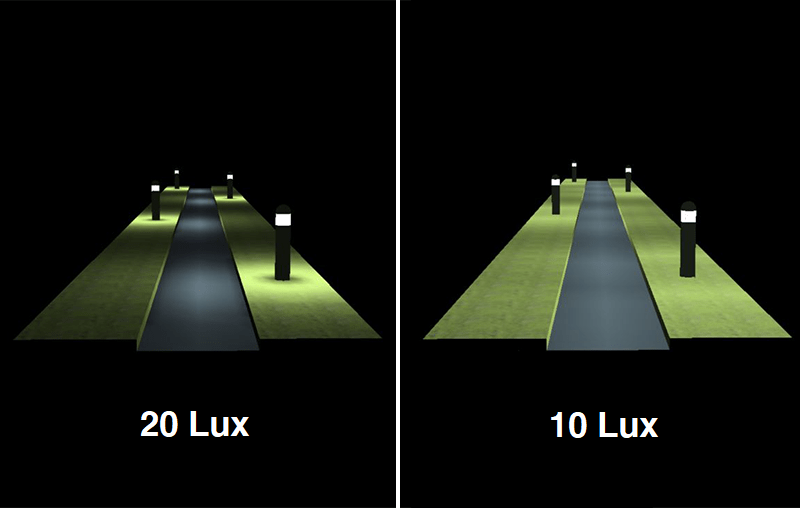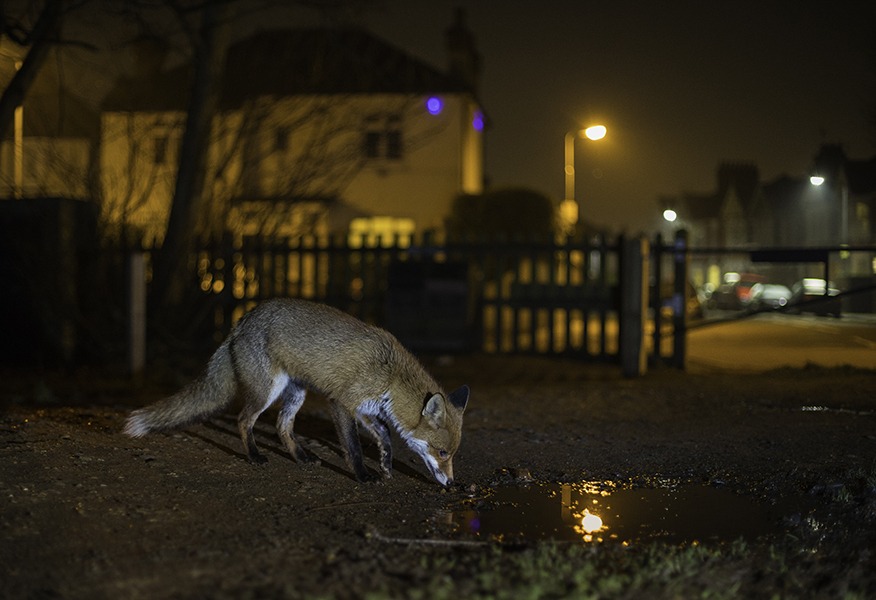
The Importance of Urban Lighting
As we move into the Autumn and Winter months, when the nights draw in and the mornings shrink, it becomes more pressing to discuss the benefits of high-quality urban lighting. The primary purpose of exterior lighting is to make us feel safe once it gets dark outside – but modern lighting solutions have been designed to do so much more.
Statistics from the UK College of Policing indicate that night time crime reduces by 20% when exterior lighting is installed. However, there is much more to it than simply fitting a street light and assuming that this will make the space safer.
Safety with Uniformity
BS EN 12464-2:2014 gives a range of specific requirements for the lighting of outdoor spaces, from minimum lux levels to uniformity, in order to provide safe travel for pedestrians moving through the space.
Many traditional lighting fixtures in exterior applications do not put enough of an emphasis on uniformity, despite reaching the minimum required lux level. The below images demonstrate the problem with focusing too heavily on lux levels without considering uniformity.
The path on the left has fittings that do achieve 20 lux at ground level, whereas on the right only 10 lux is reached. However, the uniformity of both examples is 0.01 and 0.56 respectively (on a scale between 0 and 1, where 0.25 would be the minimum required level), indicating that the luminaires used on the right provide a much more even spread. This is critical at night, to ensure the whole area is well lit, reducing the likelihood of shadows and making pedestrians feel much safer.

Achieving this even distribution comes from the use of optical control, directing the light where it should go. This applies to walkways such as the one above, to car parks where an even spread is again required, but also to road lighting, where optics push the light forward onto the road rather than onto the path, ensuring the drivers can see exactly where they are going.

Controlling Light Pollution
Optics and control of the direction of light are also critical in minimising light pollution, a previously unavoidable by-product of outdoor lighting. Poorly designed outdoor lighting would have limited control of upward illumination, characterised by a high ULOR (Upward Light Output Ratio). This misdirected light can affect people (nearby residents, night workers etc), and nature (nocturnal animals and plants confused by upward light).
Modern lighting solutions, therefore, take the necessary steps to reduce this upward light output, with optical control and specialised luminaire design, pushing the light downwards to where it needs to be – also providing measurable benefits in terms of energy efficiency, as fewer fixtures are required to light the same space.
Another key way in which modern urban luminaires provide a better environment for wildlife is through warmer colour temperatures. Traditionally, LED luminaires emit primarily blue light, but this has been found to have negative effects on various animal species, notably bats and other mammals. To combat this, contemporary solutions use colour temperatures nearer to 3000K where possible, having less of an effect on the local ecology.
Tamlite Urban Lighting Solutions
Tamlite offers a wide range of luminaires for external applications, including its new range of CITY luminaires. From road and post-top lanterns for private roads and car parks, to bollards and wall packs for pedestrianised pathways and building entrances, Tamlite provides the complete outdoor lighting solution.
Visit the Tamlite CITY page for more information, or give us a call on 01527 517777.